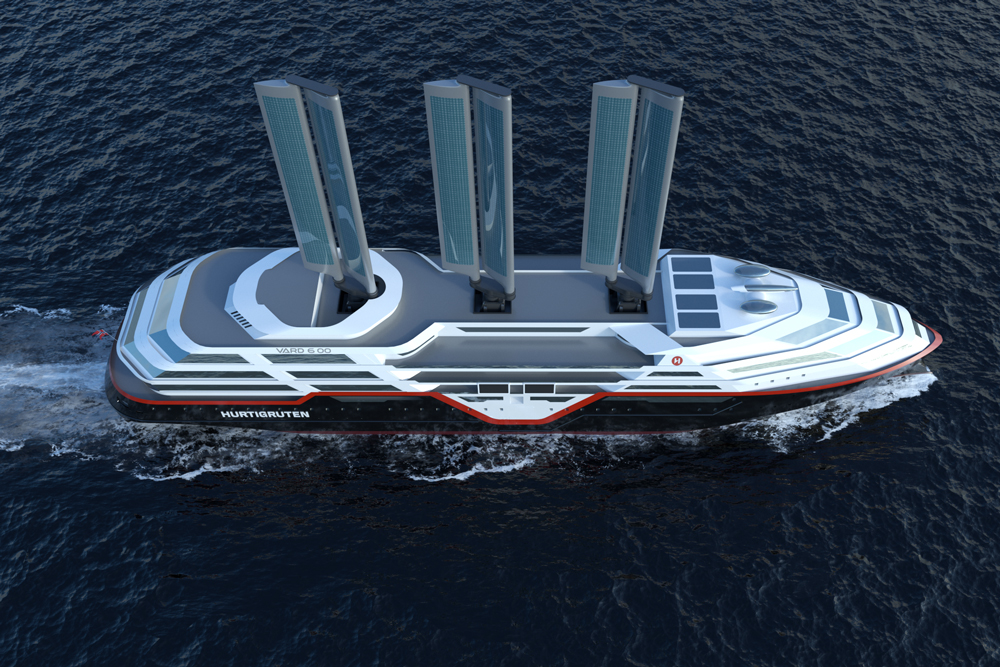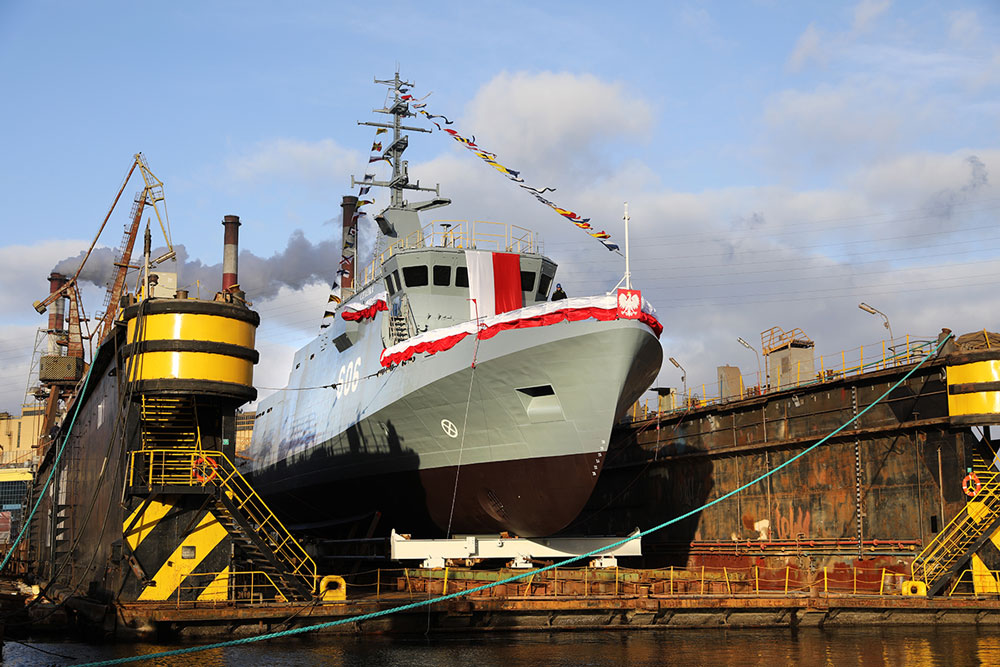Norwegian ferry operator Hurtigruten has presented a concept update for its future zero-emission coastal vessel.
Launched in 2021, the project aims to put the world’s first zero-emission mail ship into operation on the Norwegian coast by 2030. Equipped with innovative technologies such as powerful batteries and sails, the aim is to reduce energy consumption by up to 50% compared to current ships.
The new ship design, developed by Vard in Ålesund in collaboration with the Norwegian shipping industry, is an important milestone in the implementation of the “Sea Zero” project.
A highlight of the new design are the sails, which can be folded in as required to enable the passage of low bridges. Preliminary estimates show that these could reduce energy consumption by around 10%. Solar panels should enable additional savings of 2-3%. The “OceanWings” sail type, which is already in use on cargo ships, has been further developed for this ship.
Hurtigruten opts for air lubrication and batteries
Another innovative measure is the air lubrication of the hull. This technology could reduce energy consumption by a further 5%-10%. Tank tests of the ship design are scheduled for early 2025 in Trondheim in order to further optimise the interaction between the hull and sails.
The planned ship will be equipped with counter-rotating propellers and batteries with a capacity of around 60 MWh. Two retractable stern thrusters will ensure optimum manoeuvrability and increased safety in port operations. In addition, improved ventilation and insulation systems, as well as advanced energy management, contribute to significant energy savings. “Our main goal is to reduce energy consumption. To achieve this, we rely on innovative solutions that go beyond the current standard,” emphasises Gerry Larsson-Fedde, COO at Hurtigruten.
With the introduction of a test cabin of the “Smart Cabins” on the “Trollfjord”, Hurtigruten is offering its guests the opportunity to control their own energy consumption. Heating and ventilation can be regulated via an app and a display in the cabin, while the current energy consumption is visible.















